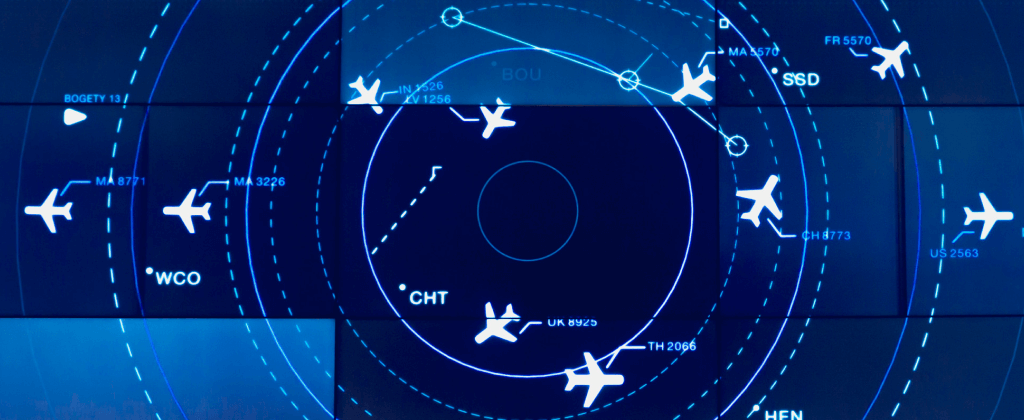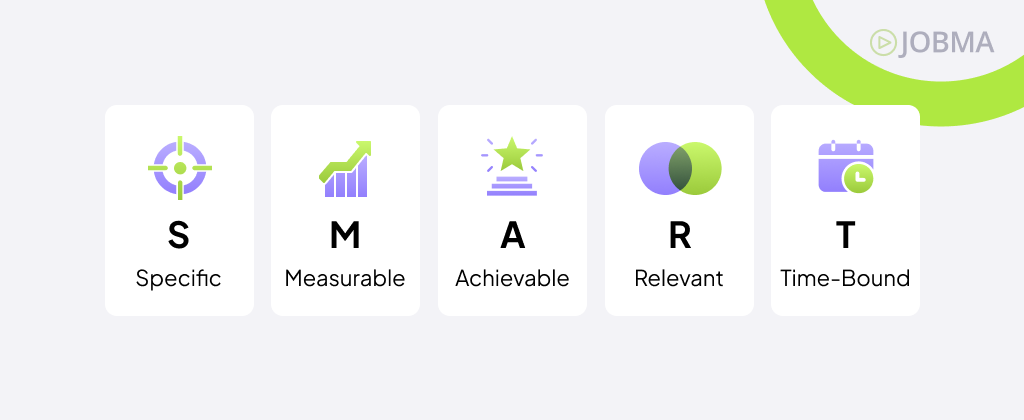A Complete Guide to Hiring and Onboarding Air Traffic Dispatchers
Aircraft dispatchers are the backbone of every flight, guiding it safely from departure to arrival. From the ground, they coordinate logistics, track weather, and enforce safety procedures, providing pilots and airlines with the reliable, real-time support they need for informed decisions in the air.
This blog helps you build a clear process to attract skilled professionals, assess their technical and interpersonal abilities, and confidently welcome new dispatchers into your team.
Defining Success: Core Competencies and Role Clarity
When you start by defining expectations, it will allow you to use your time and resources wisely. Rather than relying on a generic dispatcher checklist, focus on the specific skills people need for their everyday work.

Important technical skills include:
- Radar and flight-planning skills: Dispatchers swiftly read radar, distinguishing between storms, turbulence, icing, and ash, then advise on reroutes, altitude adjustments, or fuel adjustments. They balance safety, cost, and regulations when crafting routes and fuel loads, pre-select alternates, and monitor NOTAMs (Notice to Airmen).
- Knowledge of aviation rules: Mastery of regulations lets a dispatcher act decisively. They absorb FAA (Federal Aviation Administration) Part 121, ICAO(International Civil Aviation Organization), and IATA (International Air Transport Association) provisions, and stay current on NOTAMs and safety directives.
- Weather: Expert dispatchers track real-time meteorological data, from satellite images to SIGMETs(Significant Meteorological Information) and wind profiles, spotting storm cells, turbulence, icing layers, or sandstorms before they threaten a flight.
Dispatchers must also stay calm, adapt quickly, and communicate clearly. Clearly defining these skills helps set a standard for every step of the hiring process.
Craft an Engaging, Compliant Job Description
A great job posting shows more than requirements; it explains the importance and potential of the job. A short statement like, “Our dispatch team protects millions of passengers each year,” shows applicants their job matters. Include responsibilities as interesting challenges, like managing flights during busy periods or handling unexpected weather changes.
Make sure you include necessary compliance details, non-discrimination language, and required security clearances to meet regulations. Job posts on aviation forums, veteran groups, and aviation schools attract qualified candidates.
Be explicit in your job descriptions by breaking them into clear sections, starting with the position title and location (e.g., “Senior Aircraft Dispatcher , Chicago O’Hare (ORD) / Remote-flexible”), then add a brief “About Us” blurb to set context. Under “Key Responsibilities,” list tasks like developing and filing flight plans under FAA Part 121, tracking NOTAMs and safety directives, and coordinating with ground crews. In “Required Qualifications,” specify the FAA Aircraft Dispatcher Certificate (14 CFR Part 65), five years of Part 121 experience, U.S. citizenship for TSA/FAA security-clearance eligibility, and successful DOT drug, alcohol, and background screenings.

Source Strategies: Cast a Wide Yet Focused Net
Finding the right dispatchers involves broad but targeted outreach. Job sites and LinkedIn ads help, but top candidates are often found in specific aviation communities or alumni groups. To reach this talent pool, post on aviation-specific job boards such as Avjobs, which offers specialized aviation listings and resume database access; JSfirm, the leading aviation-only job portal since 2001, and Aviation Job Search, with a dedicated flight dispatcher section. You can also tap global networks via AviationCV’s 170k+ profiles.

Form partnerships with aviation training schools and FAA-approved programs, encouraging recent graduates to apply. Military transition programs also attract people used to making critical decisions quickly. Highlight unique aspects of your team, advanced technology, or clear paths to career advancement in your outreach messages.
Use an ATS (Applicant Tracking System) to quickly filter resumes based on specific skills such as “radar,” “NOTAM interpretation,” or “airspace coordination,” ensuring you spend time on only the best candidates.
Initial Screening: Gauging Fit and Commitment
When resumes come in, start with a quick screening that combines a brief skills questionnaire and an asynchronous video interview. Asking candidates to record concise responses lets you verify technical know-how while observing their communication style and professional presence.
Follow up with a handful of behavioral questions (for example, describing a time they had to reprioritize duties on short notice) to gauge organization and calm under stress. By blending practical scenarios, video responses, and situational questions, you’ll efficiently separate truly capable dispatchers from the rest.
Technical Assessments and High-Fidelity Simulations
Nothing prepares candidates better than realistic simulations. Computer-based scenarios allow applicants to experience situations like busy air traffic or changing weather conditions. You can assess their decision-making speed, clarity, and adherence to safety guidelines.
For end-to-end trip exercises, ForeFlight Dispatch provides scheduling, flight planning, and trip-support modules to emulate time-sensitive business aviation operations; to model airport and airspace congestion, Transoft Solutions’ FAST-time simulation software can recreate sector capacity constraints, runway occupancy conflicts, and traffic-flow scenarios.
A short quiz on important aviation procedures can also test their knowledge. Group exercises, like coordinating flights in a team setting, can demonstrate teamwork and conflict management skills.
Behavioral Evaluation and Cognitive Aptitude
Dispatchers often work in stressful situations. Testing how they handle pressure and their decision-making skills is just as important as their technical abilities.
Aviation-focused behavioral interviews leveraging the STAR method are a great way to start. These assessments may include asking candidates to describe a time they rerouted a flight due to an unexpected runway closure, detailing the Situation, Task, Action, and Result. Pair this with dispatcher-specific aptitude tests, such as the spatial orientation and multitasking subtests from the Aviation Selection Test Battery (ASTB) or simulator-based assessments via ForeFlight Dispatch or SimBrief Scenario Builder. During interviews, present a sudden NOTAM or severe weather diversion scenario and give candidates a timed exercise to recalculate fuel, file an amended flight plan, and draft the crew communication. These targeted evaluations measure their technical knowledge, decision-making speed, and composure under real-world aviation pressures.
Structured Interview Panels: Depth, Fairness, and Consistency
During interviews, a panel ensures fair and balanced evaluations. Include experienced dispatchers, operational leaders, peers, and HR representatives to cover every aspect of the job.
Each interviewer should have a scorecard to rate candidates based on key skills like technical knowledge, communication, teamwork, and stress management. After interviews, compare notes to ensure decisions are balanced and fair.
Offers, Background Checks, and Regulatory Compliance
When making an offer, clearly communicate not just salary and start date but also conditions like shifts, mandatory training, and licensing requirements. Background checks, drug screenings, medical tests, and security clearances must comply with FAA regulations.
Transparent communication helps new hires understand exactly what to expect, building trust and confidence before their first day.
Onboarding: A Phased, Supportive Approach
Onboarding dispatchers should be supportive and phased to build confidence from day one. A structured program blends formal training with real-life practice and mentoring.
To help new dispatchers settle in, start with a warm welcome, introduce them to your company’s mission, safety culture, and the people they’ll collaborate with. Guide them gently through key procedures, flight-planning tools, and management software, then offer opportunities to shadow experienced team members so they can observe real-world situations at their own pace.
Encourage questions through regular check-ins, brief quizzes, and one-on-one mentoring, creating a supportive space for learning. As they grow more comfortable, gradually invite them to take on small tasks, building up to full independence when they feel ready.
Performance Monitoring and Feedback Loops
Maintaining high standards requires continuous feedback. Monitoring key metrics such as routing accuracy, safety adherence, and clear communication helps identify areas needing improvement.

Individual development plans guide dispatchers toward ongoing learning and career growth. Begin with a skills inventory and self-assessment, identifying strengths (e.g., route planning, weather analysis) and areas for growth (e.g., NOTAM interpretation, communication under pressure). From there, set 3-5 SMART (Specific, Measurable, Achievable, Relevant, and Time-bound) goals, for example, “Complete three high-fidelity simulation exercises within 60 days” or “Lead a supervised night-shift dispatch by month three.” Pair each goal with learning activities, such as monthly simulator sessions (using ForeFlight Dispatch or SimBrief), targeted online modules on the latest FAA/IATA updates, and rotating through peak-traffic shifts to build real-world experience.
Schedule weekly check-ins during the first 90 days, then quarterly coaching sessions thereafter, where a mentor reviews progress, adjusts objectives, and runs mini-scenario drills (e.g., managing a sudden runway closure). Celebrate milestones, like passing your first solo dispatch simulation or earning a “Regulations Mastery” badge, in team meetings or via internal reward programs. Over a 6- to 12-month cycle, gradually increase responsibilities in line with demonstrated competence, ensuring each dispatcher has a clear roadmap, regular feedback, and tangible recognition every step of the way.
Well-Being, Resilience, and Retention
Dispatchers often face high mental demands. Providing structured breaks, reasonable work shifts, mental health resources, counseling, and stress management training ensures their well-being.
Clear career paths, flexible scheduling, and supportive workplace policies help maintain long-term engagement and reduce turnover. Proactively caring for the dispatcher’s well-being helps build loyalty and consistent performance.
Conclusion
Hiring and training air traffic dispatchers is critical and demands precision, care, and commitment. Clearly defining roles, crafting engaging job descriptions, targeted sourcing, and balanced assessments ensure you hire the right talent.
Effective onboarding with realistic training and ongoing support builds confident, capable dispatchers. Continuous learning, performance monitoring, and a focus on well-being sustain excellence in the long run. A holistic approach ensures your team is ready not only for today’s challenges but also for tomorrow’s innovations, keeping air travel safe and reliable.

FAQs
What are common aircraft dispatcher interview questions?
In an aircraft dispatcher interview, you’ll often be asked to demonstrate your decision-making, technical know-how, and communication skills under pressure. For example, employers may ask how you’d handle an in-flight weather emergency, walk them through the steps of issuing a flight release, or describe a time you coordinated with pilots and air traffic control during a disruption. Here are some more examples:
- You receive a NOTAM closing your primary departure runway 30 minutes before pushback. What steps do you take?
- A line of thunderstorms develops along your planned route. How do you reassess fuel, altitude, and alternate airports?
- What are the main differences between a METAR and a TAF, and how do you use each in your dispatch planning?
You might also be questioned on your familiarity with FAA regulations, your experience using flight-planning software, and how you manage stress when quick judgments are required.
What does an aircraft dispatcher do?
An aircraft dispatcher partners with pilots and operations teams to ensure each flight departs and arrives safely and efficiently. They create and approve flight plans by analyzing weather, fuel requirements, payload, and routing, monitor en-route conditions, and issue flight releases that comply with regulatory and company standards. Dispatchers also coordinate with maintenance crews, air traffic control, and ground staff, providing real-time advisories and handling any delays, diversions, or emergencies that arise.
What qualifications are required to become an aircraft dispatcher?
To become an aircraft dispatcher, you must hold an appropriate certification, such as the FAA Aircraft Dispatcher Certificate in the U.S., which requires completing an accredited training program in meteorology, navigation, regulations, and communications.
Strong analytical skills, attention to detail, and the ability to work irregular shifts, along with excellent verbal and written communication, are essential; while prior experience in aviation operations can give you an edge, specific certification paths and regulatory requirements may vary by country or region.
Where can I find qualified aircraft dispatcher candidates?
Qualified dispatchers can be sourced through specialized aviation job boards like Avjobs, JSfirm, or AeroIndustryJobs, as well as through the alumni networks of accredited dispatcher training schools. Professional associations, such as the National Aircraft Dispatchers Association, often maintain candidate directories or job-posting services.
You can also tap into LinkedIn’s aviation groups or partner with recruitment firms that specialize in aviation staffing to access pre-screened, certified professionals.



